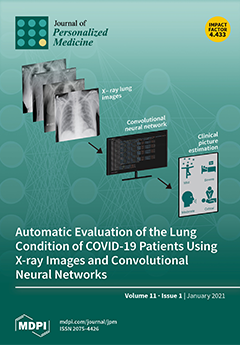The principal goal of the study was to map common postpartal alterations in gene expression of microRNAs associated with diabetes/cardiovascular/cerebrovascular diseases induced by most frequently occurring pregnancy-related complications (gestational hypertension, preeclampsia, fetal growth restriction, gestational diabetes mellitus, preterm prelabor rupture of membranes, or
[...] Read more.
The principal goal of the study was to map common postpartal alterations in gene expression of microRNAs associated with diabetes/cardiovascular/cerebrovascular diseases induced by most frequently occurring pregnancy-related complications (gestational hypertension, preeclampsia, fetal growth restriction, gestational diabetes mellitus, preterm prelabor rupture of membranes, or spontaneous preterm birth). In addition, the association analyses between individual abnormal clinical findings (overweight/obesity, central obesity, hypertension, on blood pressure treatment, history of infertility treatment, actual hormonal contraceptive use, the presence of trombophilic gene mutations, actual smoking status, increased serum levels of total cholesterol, HDL (high density lipoprotein) cholesterol, LDL (low density lipoprotein) cholesterol, triglycerides, lipoprotein A, CRP (C-reactive protein), and uric acid, and increased plasma levels of homocysteine) and microRNA expression levels were performed in mothers with respect/regardless to previous course of gestation. The prior exposure to gestational hypertension, preeclampsia, fetal growth restriction, gestational diabetes mellitus, preterm prelabor rupture of membranes, or spontaneous preterm birth caused that a significant proportion of mothers (52.42% at 90.0% specificity) had substantially altered microRNA expression profile, which might originate lifelong cardiovascular risk. 26 out of 29 tested microRNAs were up-regulated in mothers with a history of such complicated pregnancies. MicroRNA expression profiles were also able to differentiate between mothers with normal and abnormal clinical findings (BMI (body mass index), waist circumference, systolic blood pressure, on blood pressure treatment, history of infertility treatment, and the presence of trombophilic gene mutations) irrespective of previous course of gestation. The treatment of hypertension even intensified upregulation of some microRNAs (miR-24-3p, and miR-342-3p) already present in women after complicated pregnancies. Newly, the presence of overweight/obesity (miR-155-5p), systolic hypertension (miR-92a-3p, and miR-210-3p), treatment for infertility (miR-155-5p), and treatment for hypertension (miR-210-3p) induced upregulation of several microRNAs. In general, mothers after complicated pregnancies are at increased risk of development of cardiovascular complications. Especially those mothers indicated to have postpartally altered microRNA expression profiles might be considered as a highly risky group that would benefit from dispensarization and implementation of primary prevention strategies.
Full article






